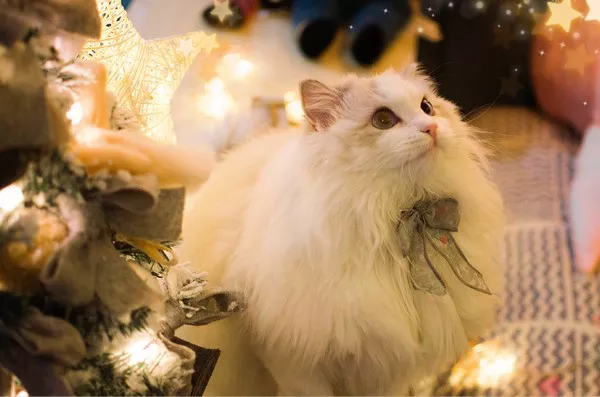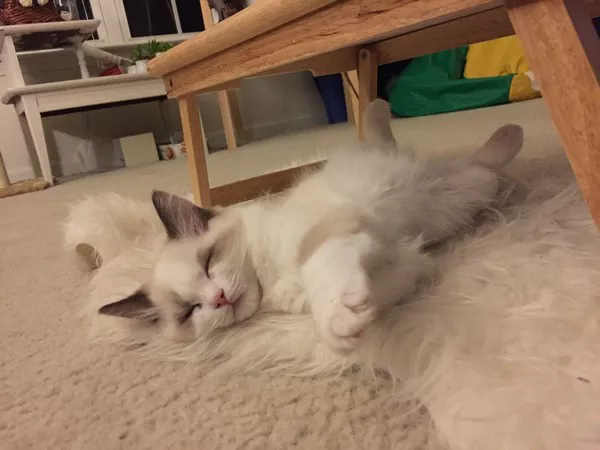Grumpy Cat, whose real name was Tardar Sauce, captured the hearts of millions worldwide with her perpetually disgruntled expression and viral internet memes. As fans marveled at her unique appearance and irresistible charm, questions about Grumpy Cat’s breed arose. One common inquiry that emerged was whether Grumpy Cat belonged to the Ragdoll breed. In this article, we will delve into the fascinating world of Grumpy Cat, exploring her breed, distinctive features, and the genetic makeup that contributed to her memorable persona.
Grumpy Cat’s Rise to Internet Fame
1. Internet Sensation: Grumpy Cat rose to fame in 2012 when a photo of her distinctive frowning face went viral on social media. The image quickly became an internet sensation, and Grumpy Cat’s popularity soared. Her perpetually grumpy expression, caused by feline dwarfism and an underbite, added to her charm and made her an icon in the world of internet memes.
2. Unique Appearance: Grumpy Cat’s appearance was characterized by her small size, short legs, and distinctive facial features. Her underbite and feline dwarfism contributed to her unique look, and the world fell in love with the cat who seemed to wear a perpetual scowl.
Understanding the Ragdoll Breed
1. Characteristics of Ragdoll Cats: The Ragdoll breed is known for its large size, striking blue eyes, semi-longhair coat, and color-point pattern. These cats are characterized by their docile and affectionate nature, making them popular companions. Ragdolls often display a tendency to go limp when held, earning them the nickname “puppy-cats.”
2. Color-Point Pattern: The color-point pattern in Ragdoll cats features darker coloration on the ears, face, paws, and tail, while the body remains lighter in color. This creates a visually striking contrast that enhances the cat’s overall appearance.
3. Blue Eyes: One of the defining features of Ragdoll cats is their vivid blue eyes. The deep blue hue contributes to their captivating gaze and is a key aspect of the breed standard.
Grumpy Cat’s Breed: Domestic Short Hair (DSH)
1. Domestic Short Hair Background: Grumpy Cat was not a Ragdoll; she was a Domestic Short Hair (DSH) cat. Domestic Short Hair is a term used to describe cats with mixed or unknown ancestry and short coats. Grumpy Cat’s unique appearance was the result of genetic variations, including feline dwarfism and an underbite.
2. Genetic Conditions: Grumpy Cat’s distinctive features were attributed to genetic conditions rather than the breed characteristics associated with Ragdolls. Feline dwarfism, in particular, played a significant role in shaping Grumpy Cat’s small stature and short legs.
3. Underbite: Grumpy Cat’s underbite, where the lower jaw extended slightly beyond the upper jaw, contributed to her distinct facial expression. This condition was not a characteristic of the Ragdoll breed but rather a unique aspect of Grumpy Cat’s individual genetic makeup.
Ragdoll Cats and Their Unique Characteristics
1. The “Going Limp” Phenomenon: Ragdoll cats are known for their tendency to go limp when picked up, a behavior that has been coined the “Ragdoll effect.” This behavior is associated with their calm and placid temperament, as well as their trust in their human companions.
2. Affectionate and Tolerant Nature: Ragdoll cats are celebrated for their affectionate and tolerant nature. They often seek close contact with their owners, enjoy being held, and are known to follow their humans from room to room. This gentle demeanor contributes to their popularity as family pets.
3. Variety of Colors: While the color-point pattern is a hallmark of Ragdoll cats, they come in a variety of colors and patterns beyond the classic color points. Ragdolls may exhibit bi-color, mitted, or even solid colorations, providing a range of visual diversity within the breed.
Grumpy Cat’s Impact on Cat Culture
1. Internet Celebrity: Grumpy Cat’s rise to internet stardom marked a new era in cat culture. Her distinctive scowl became a symbol of humor and relatability, resonating with people from all walks of life. Grumpy Cat’s popularity extended beyond the internet, leading to merchandise, appearances, and even a book deal.
2. Global Icon: Grumpy Cat’s impact on cat culture was profound, transforming her into a global icon. Her image became synonymous with a humorous and relatable attitude, and fans around the world embraced her as a symbol of resilience in the face of adversity.
3. Legacy: Grumpy Cat’s passing in 2019 saddened her fans, but her legacy continues to live on through the internet, memes, and the memories of those who were touched by her unique charm. Grumpy Cat remains an enduring figure in the world of feline celebrities.
The Genetics of Feline Dwarfism
1. Role of Genetics in Grumpy Cat’s Appearance: Grumpy Cat’s small size and short legs were attributed to feline dwarfism, a genetic condition that affects the skeletal development of cats. This condition is unrelated to the genetics associated with specific cat breeds like the Ragdoll.
2. Various Forms of Dwarfism: Feline dwarfism can manifest in different forms, affecting the proportions of a cat’s body. In Grumpy Cat’s case, the condition contributed to her petite stature and distinctive physical features.
3. Genetic Variation in Domestic Cats: Domestic cats, including Domestic Short Hair breeds like Grumpy Cat, can exhibit a range of genetic variations that result in unique physical characteristics. These variations contribute to the diversity seen in the feline population.
The Significance of Ragdoll Cats in Cat Culture
1. Beloved Companions: Ragdoll cats are cherished for their affectionate nature, striking appearance, and calm demeanor. They have become beloved companions in countless households, forming strong bonds with their owners and adding joy to the lives of those who share their homes.
2. Internet Presence: While Grumpy Cat brought attention to the world of internet cat celebrities, Ragdoll cats and other breeds continue to have a strong presence online. Social media platforms feature Ragdoll cat accounts, showcasing their beauty, playfulness, and the special connections they share with their owners.
3. Popular Choice for Families: Ragdoll cats are often chosen as family pets due to their gentle and sociable nature. Their adaptability to indoor living, along with their affectionate behavior, makes them a popular choice for families seeking a feline companion.
Conclusion
In conclusion, Grumpy Cat, despite her fame and unique appearance, was not a Ragdoll. She belonged to the Domestic Short Hair breed and gained international recognition for her internet presence and perpetually grumpy expression. While Ragdoll cats are celebrated for their distinctive features, affectionate nature, and the “going limp” behavior, Grumpy Cat left an indelible mark on cat culture as a global icon and beloved internet celebrity. Understanding the differences in breeds, genetics, and individual variations adds depth to our appreciation of the diverse and enchanting world of feline companions.


























